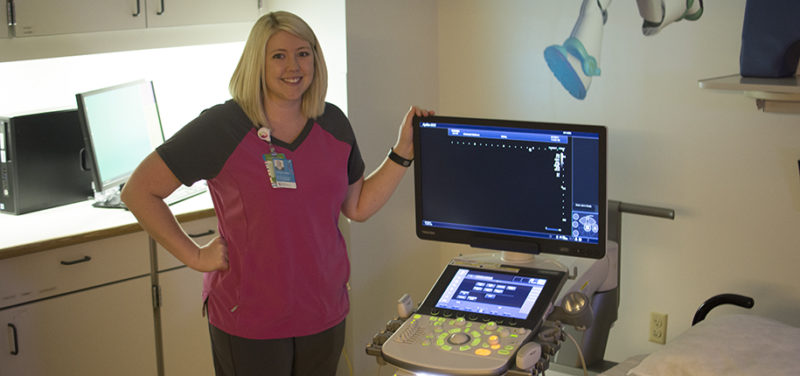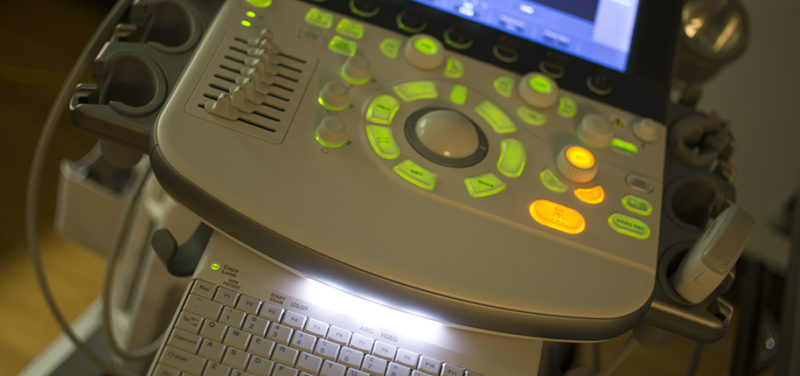
Ultrasound has always been an integral part of patient care at Cincinnati Children’s. Its use of sound waves instead of radiation as well as its portability and cost make it an ideal imaging option for our pediatric patients.
Cincinnati Children’s recently purchased seven new Toshiba Aplio i800 ultrasound machines, keeping our Radiology department at the forefront of new technology. These advanced machines deliver improved clinical images in a more efficient and ergonomically safe fashion.

Newly developed high-frequency ultrasound wands, or transducers, allow us to image superficial structures such as the skin, muscles and nerves clearer than ever before. This enhanced resolution opens up new applications for ultrasound. Superb microvascular imaging allows us to visualize and evaluate low velocity vessels never before seen with diagnostic ultrasound. Other new technology includes a more focused sound beam, giving greater detail and sharper images of tissues at all depths. We can also now scan and acquire raw data quickly at a critical patient’s bedside, performing measurements and image manipulations at a later time.
The machine itself is smaller and 100 pounds lighter than the previous machines, making it easier to maneuver throughout the hospital to perform ultrasound exams. It powers up in a mere 13 seconds, so we are ready to begin scanning almost immediately. The imaging panel height adjusts 36 centimeters, allowing technologists of all heights to scan in a comfortable position, reducing worker strain and injuries. The panel also swings in a lateral dimension, enabling the technologist to scan closer to the patient in spite of IV pumps, ventilators, and other patient care equipment. Images on critical patients are sent immediately to the radiologist for interpretation via WiFi, providing a diagnostic answer quickly and reliably.
This update in the ultrasound department keeps us on the cutting edge, increasing our clinical precision, technologist safety and departmental productivity.